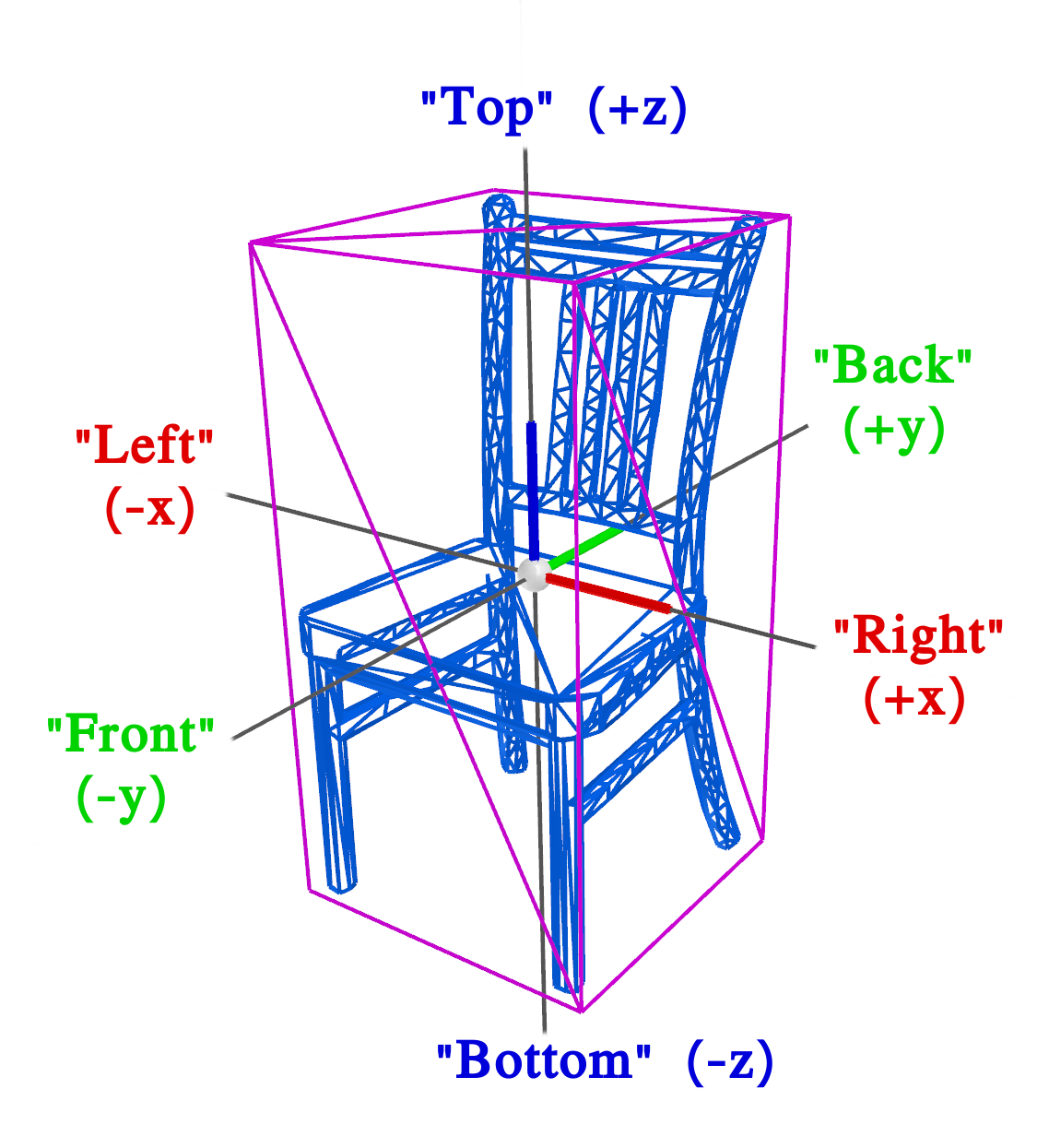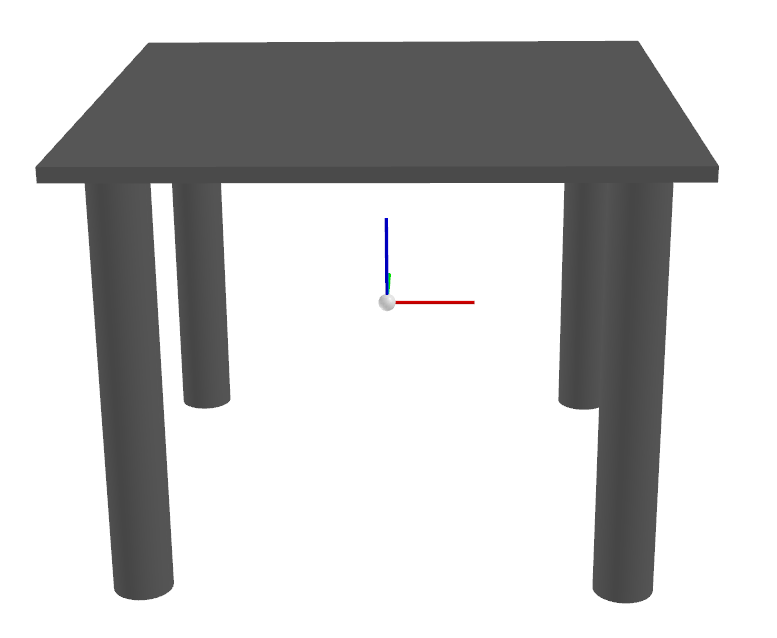Assets
Scenes are composed of objects which are instantiated via the Asset class. There are two types of assets: procedural assets and file-based assets.
File-based assets can be loaded from a variety of common mesh formats such as STL, PLY, GLTF/GLB, OBJ, DAE, and even formats describing articulations such as URDF, MJCF, or USD.
The Asset constructor has multiple optional arguments:
import scene_synthesizer as synth
chair = synth.Asset(
'<PATH_TO_MESH>.obj',
height=0.12,
origin=('center', 'center', 'bottom'),
)
The origin parameter can be used to define a new coordinate origin different from the one of the loaded mesh file.
It defines a relative coordinate along XYZ via keywords:
Value of |
Description |
|---|---|
com |
Center of mass |
center |
(max(vertices) - min(vertices)) / 2 |
centroid |
Mean of vertices |
left, front, bottom |
Minimum of vertices |
right, back, top |
Maximum of vertices |

The size of an asset can be specified in various ways:
Parameter |
Type |
Description |
|---|---|---|
scale |
float |
All 3 dimensions are multiplied by this scale factor. |
size / extents |
Tuple[float, float, float] |
Absolute lengths for all dimensions are specified. Allows for non-uniform scaling. |
width |
float |
Absolute length in X dimension. Y an Z will be scaled to perserve the aspect ratio. Can be combined with depth and/or height. |
depth |
float |
Absolute length in Y dimension. X an Z will be scaled to perserve the aspect ratio. Can be combined with width and/or height. |
height |
float |
Absolute length in Z dimension. X an Y will be scaled to perserve the aspect ratio. Can be combined with width and/or depth. |
max_length |
float |
The longest dimension will be scaled. The other two will be scaled to preserve the aspect ratio. |
min_length |
float |
The shortest dimension will be scaled. The other two will be scaled to preserve the aspect ratio. |
max_width_depth |
float |
The longer dimension in X and Y will be scaled. Z will be scaled to preserve the aspect ratio. |
width_scale |
float |
Multipy X dimension by this factor. Can be used in combination with depth and/or height. |
depth_scale |
float |
Multipy Y dimension by this factor. Can be used in combination with depth and/or height. |
height_scale |
float |
Multipy Z dimension by this factor. Can be used in combination with depth and/or height. |
The submodule scene_synthesizer.procedural_assets contains a number of procedural assets. Besides the parameters for file-based assets they also contain object/part-specific arguments:
from scene_synthesizer import procedural_assets as pa
table = pa.TableAsset(
width=1.0,
depth=1.0,
height=0.75,
thickness=0.025,
leg_thickness=0.025
)
The show() method provides a simple viewer to quickly examine assets (based on pyglet; use w for switching to wireframe mode and a to toggle between showing different axes; see keyboard shortcuts):
table.show(use_collision_geometry=False)

Note, that some asset formats (such as URDF) distinguish between visual and collision geometry.
This allows for keeping high visual complexity during rendering whereas computing the physical behavior can be based on a simpler geometry.
The use_collision_geometry argument is used during visualization (see show() above), and when adding an object to a scene (see add_object(..) in next section):
Value |
Description |
|
|---|---|---|
use_collision_geometry |
True |
Only the collision geometry is shown/added to the scene. |
False |
Only the visual geometry is shown/added to the scene. |
|
None |
Both, visual and collision geometry are shown/added to the scene. |